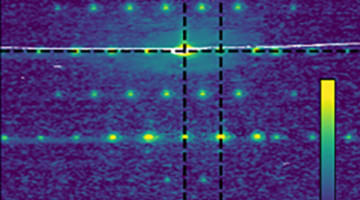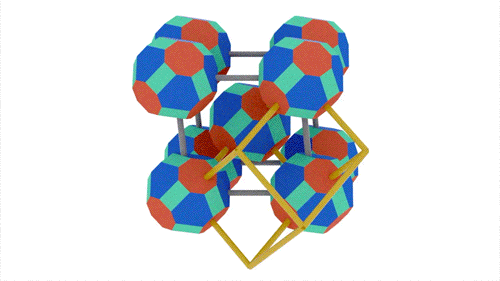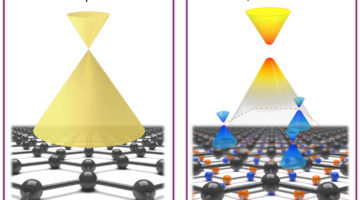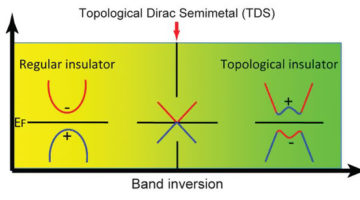Researchers fabricated artificial spin lattices that undergo a paramagnetic-to-antiferromagnetic phase transition. These artificial antiferromagnets enable studies of dynamical properties that are critical to understanding, and ultimately implementing, real-world applications such as advanced computing and data-storage technologies. Read more »
Quantum-Related Research at the ALS
The Choreography of Quantum Dot Fusion
X-ray scattering experiments helped reveal how nanosized crystals (“quantum dots”) self-assemble and fuse to form “supercrystals” with potentially useful electronic properties. The findings provide new insight into the fabrication of high-performance, low-cost electronic materials for photovoltaic and photon-sensing applications. Read more »![]()
![]()
Chiral Crystals Give Rise to Topological Conductors
Researchers have discovered materials whose chiral crystal structures produce chirality in their electronic behavior. These topological conductors retain their unique electronic properties regardless of defects and open new possibilities in materials research. Read more »
Expanding the Infrared Nanospectroscopy Window
An innovative infrared-light probe with nanoscale spatial resolution has been expanded to cover previously inaccessible far-infrared wavelengths. The ability to investigate heterogeneous materials at nanometer scales and far-infrared energies will benefit a wide range of fields, from condensed matter physics to biology. Read more »![]()
![]()
A 2D Lattice of Molecular Qubits for Quantum Computing
Researchers developed a way to build a 2D lattice of molecular-spin qubits (quantum bits of information), with control over qubit orientation and localization. The work enables the integration of molecular quantum-information hardware into the scalable, robust, solid-state architectures needed for performing quantum computation. Read more »![]()
![]()
The Electronic Structure of a “Kagome” Material
Scientists have verified exotic electronic properties predicted to emerge in a ferromagnetic material with “kagome” (trihexagonal) lattice symmetry. The greater understanding of kagome materials afforded by this work helps open up a new path toward goals such as ultralow-power electronic devices and quantum computing. Read more »![]()
![]()
Altered States in Graphene Heterostructures
ARPES directly reveals for the first time how electronic states are altered when epitaxial graphene is deposited on a substrate of hexagonal boron nitride (h-BN). The interaction between the materials in this heterostructure greatly improves its suitability for advanced, ultralow-power device applications. Read more »![]()
![]()
Discovery of Weyl Semimetals May Lead to Novel Future Spintronic Applications
A team of researchers using angle-resolved photoemission spectroscopy (ARPES) at ALS Beamline 10.0.1 found intriguing particles in a new phase of quantum matter: topological Weyl semimetals.
Read more »
Moore Foundation Funds ALS Researchers for Promising New Technique for Studying Materials
A novel x-ray scattering concept by researchers at Lawrence Berkeley National Laboratory’s (Berkeley Lab) Advanced Light Source (ALS) is receiving support from the Gordon and Betty Moore Foundation in the amount of $2.4 million. The grant was awarded in April by the foundation. The lead investigator on the effort will be ALS Division Deputy Zahid Hussain with ALS Director Roger Falcone acting as co-PI on the project. Read more »
Graphene’s 3D Counterpart
ALS researchers have discovered a material that is essentially a 3D version of graphene — the 2D sheets of carbon through which electrons race at many times the speed at which they move through silicon. The discovery promises exciting new things to come for the high-tech industry, including much faster transistors and far more compact hard drives. Read more »![]()
![]()









